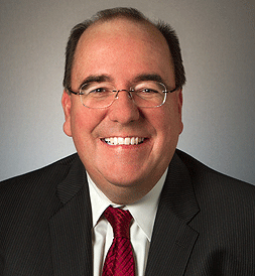Union membership rates have been falling for decades. Despite a union-friendly National Labor Relations Board and supportive Obama Administration, organized labor has failed to mean- ingfully increase membership levels. In 1983, the rate was 20.1 percent of the workforce. The Bureau of Labor Statistics reports that in 2013, union members made up 11.3 percent of the workforce. The membership rate in the private sector was 6.7 percent, while the rate in the public sector was 35.3 percent. Unable to convince workers to unionize in any significant numbers, and fighting for their own relevancy, unions have refined their strategy. They are campaigning to change workplace laws, in major part, to foster greater union density and increase pressure on non-union employers to deal with them. Garnering national media attention, the new SeaTac, Washington, ordinance imposing a $15 minimum wage presents unions’ new blueprint to unionize non-union employers or, at least, to increase their costs of doing business, which benefits other, union- ized, employers.
After the most expensive per-vote-earned election in Washington history and a hand recount, SeaTac vot- ers approved Proposition One by 77 votes (50.6 per- cent to 49.4 percent) in 2013. Labor unions, includ- ing Unite Here, Service Employees International Union and the Teamsters, initiated and financially supported the ordinance. The union-led campaign raised more than $1.4 million; the business-led opponents raised less than half that amount. The ordinance took effect on January 1, 2014, and has been subject to legal challenge ever since.
The ordinance mandates a $15-per-hour minimum for workers at SeaTac International Airport and airport-related businesses outside of the airport (including hotels with more than 100 rooms, airline service contractors and rental car companies). Additionally, it requires that businesses provide 6.5 days of paid sick leave a year to full-time employees, that businesses offer additional hours to part-time employees before hiring more workers, that tips and service charges be allocated only to certain employees, and that successor employers retain the predecessor’s employees for at least 90 days after an ownership change (this is to limit the new employer’s ability to set initial terms and conditions of employment following a purchase or an owner- ship change).
The new law has strong enforcement mechanisms, including allowing labor organizations the right to sue for violations. Further showing organized labor’s influence and the law’s “carrot” to unionize, all provisions of the new law may be waived in a “bona fide collective bargaining agreement.”
Striking down part of the law in late-December, state court Judge Andrea Darvis concluded that state law gives the Port of Seattle exclusive jurisdic- tion over all operations at the airport, preempting enforcement of the new law there. Further, she found the National Labor Relations Act preempted the part of the ordinance that makes it unlawful to retaliate against an employee for informing a union about an alleged violation of the ordinance, finding it void as a supplemental sanction for violations of the NLRA. However, in relevant part, Judge Darvis found the ordinance lawful for covered SeaTac workers working outside of the airport’s grounds. The judge’s ruling has been appealed.
The City of Seattle appears headed toward a $15- per-hour minimum wage. Promptly after taking office on January 1, Mayor Ed Murray directed his departmental leaders to develop strategies for paying city workers at least $15 per hour. The higher mini- mum wage was a major plank in Mayor Murray’s campaign, which was backed and supported by organized labor. Similarly, new Seattle City Council member Socialist Kshama Sawant ran and won on a $15-per-hour minimum wage platform. Meanwhile, the state legislature is considering raising the state minimum wage to $12 per hour by January 2017 and tying subsequent increases to inflation. Washington is one of 30 states considering minimum wage increases.
Employers in the Pacific Northwest must prepare to deal with the new union challenges through train ing and positive employee relations. Moreover, employers need to become active politically — directly or through associations — to have their voices heard as these and other workplace changes are being considered.




 i
i


